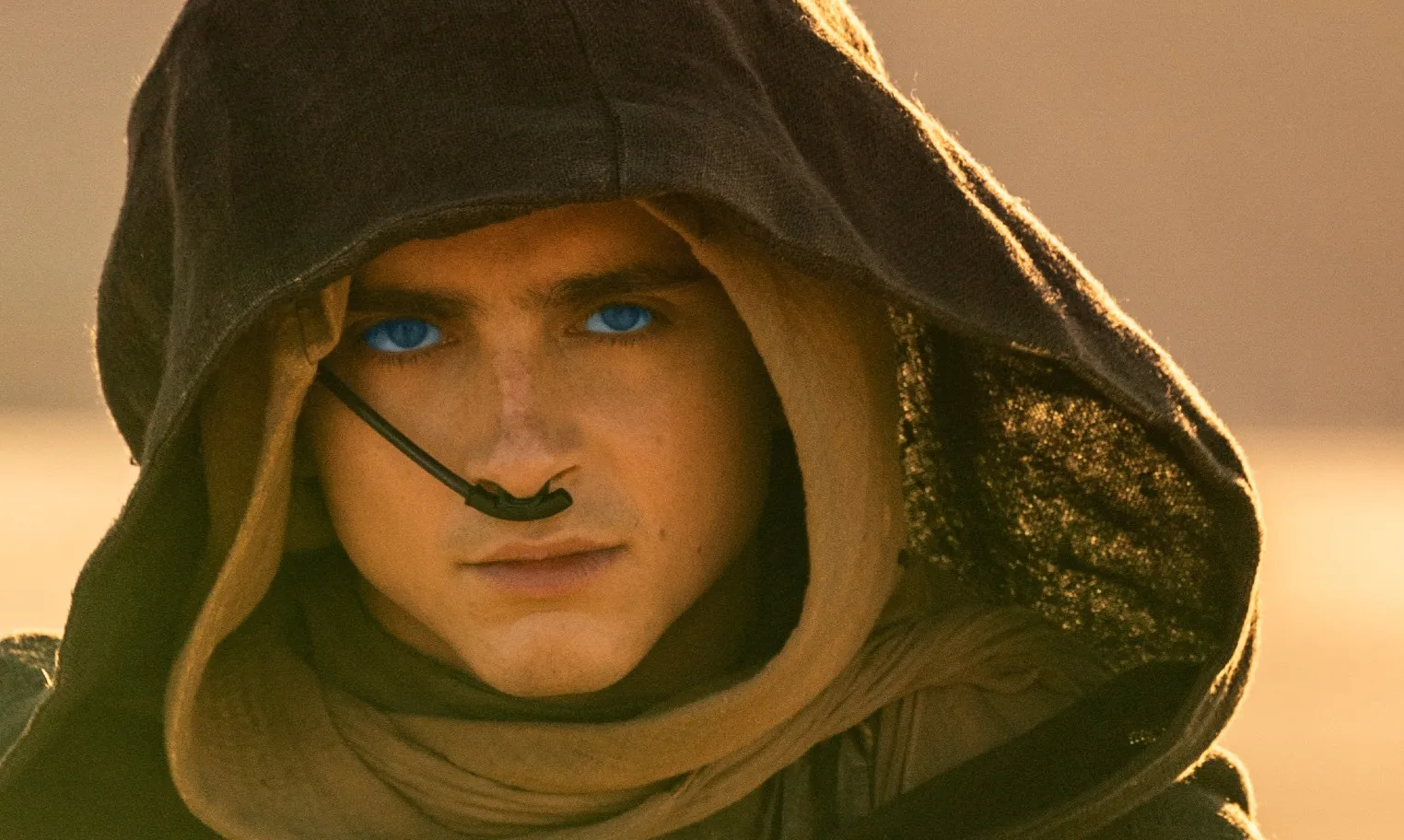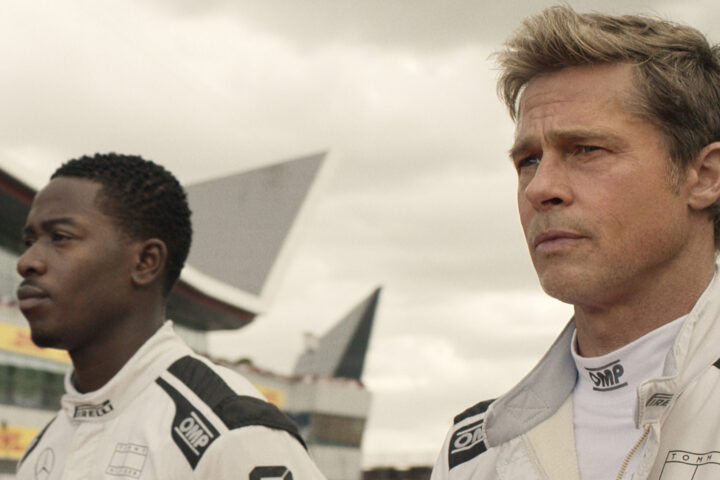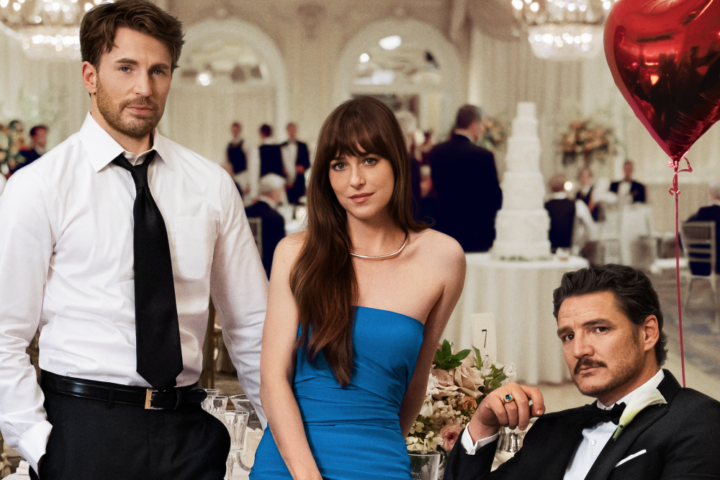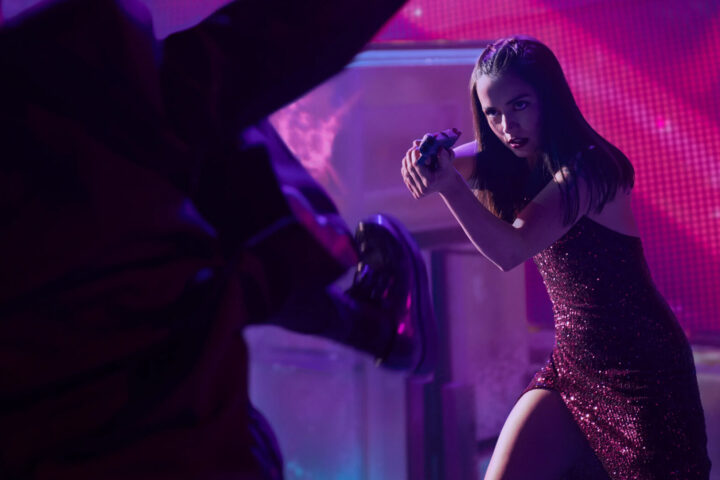Dune: Part Two, Denis Villeneuve’s second installment of Frank Herbert’s landmark sci-fi saga and follow-up to his 2021 introduction Dune, is a bigger, bolder and better movie than its portentous predecessor, featuring gargantuan filmmaking on an “epic” scale and a return to the sort of confidently large canvas movie adventure-making today’s Hollywood has all but abandoned in favor of expensive juvenilia so often littering multiplexes.
Yet for all its visionary scale (huge sets and action sequences) and narrative ambition (thematically complex prophecy fulfillment), Dune: Part Two is so high on its own fumes of sci-fi deep think it nearly forgets to be entertainment; this is the blockbuster rendered with solemn self-importance. While the picture is undeniably great looking and frequently astonishing in design—which may be enough for many—is it enjoyable? Do we care about anyone onscreen? Does Villeneuve justify the 166-minute screen time? While answers are sure to vary depending upon Dune aficionado mileage, from my second row seat in the thundering, seat-shaking Dolby Cinema screening, I’d argue sort of, not really and nope.
If the first installment was an origin story introducing young Paul Atreides and the dueling Atreides and Harkonnen family houses, Dune: Part Two is a tale of destiny and power that, in its best moments, is as intoxicating as the spice-laden air of its desert setting. Both blockbuster and art film in its arresting aural and visual design, the picture opens with young Atreides, portrayed with modernity by Timothée Chalamet, and his mother, Lady Jessica Atreides (Rebecca Ferguson), assuming cover in the heart of the Arakis desert tribe known as the Fremen.
Both mother and son are cloaked in the anonymity of the desert, sheltered by charismatic Fremen leader Stilgar, into whom Javier Bardem breathes a much-needed levity. Stilgar sees in Paul the potential for “the one”—the Fremen’s messianic savior, Muad’Dib, who has been long awaited by a people encumbered by centuries of unfulfilled prophecies while fighting for the sovereignty of planet Arrakis against the evil Harkonnen empire.
Paul has two issues on his mind, the first the burden of the prophecy and impending transformation, a heavy weight on the shoulders of a young adult man on the cusp of first love with tough Fremen warrior Chani (Zendaya), their budding romance interrupted by matters of destiny. Paul’s journey to becoming Muad’Dib is not just a hero’s quest but a meditation on the nature of power and the personal price. His trial, to ride the largest of the desert’s sand worms (a terrifically mounted sequence) and to survive drinking the fabled water of life (which will give him Fremen-blue eyes), is a rite of passage and manhood but also a metaphor for the transformative power of belief and the birth of new religions, well expressed in Villeneuve’s screenplay, co-written by Jon Spaihts.
Meanwhile, Lady Jessica’s arc is also one of ascension and sacrifice. As a member of the Bene Gesserit, a secretive priestess sisterhood with formidable mental and spiritual powers, and with another potential future leader growing within her (a fetus with whom she can communicate and who appears, in one scene, as Anya Taylor-Joy, teasing out the next installment), Lady Jessica stands poised to become the Fremen’s new reverend mother. Like her son’s trajectory, she will become a figure of religious authority, guiding spiritual and temporal destinies. Ferguson has more to do this time around and embodies Lady Jessica with a commanding mix of maternal instinct, political savvy and shadowy mysticism.
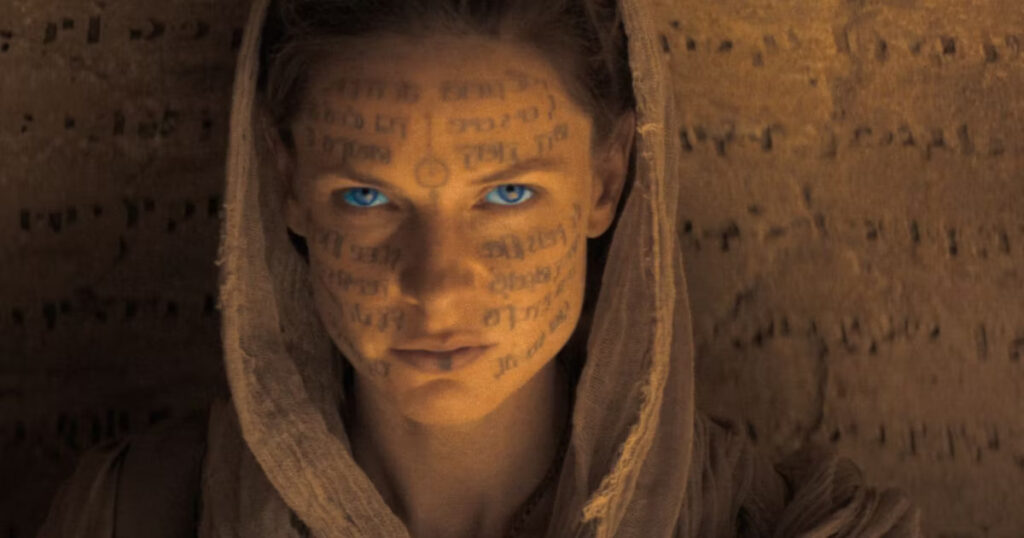
Villeneuve excavates Herbert’s political power plays and prophecy mythos as well as new religion origin with a straight-faced seriousness that is, frankly, a bit much to take, and can feel as suffocating and arid as the waterless Arrakis itself. But what he does with the camera is the stuff of greatness, and an opening sequence of a thwarted Harkonnen Arrakis invasion, with balletic bodies scaling and falling from cliffs, sets the tone for the picture’s ingenious stagecraft.
Such inventiveness arguably reaches an apex at the 65-minute mark upon departing Arrakis for planet Geidi Prime, home of the Harkonnens, rendered by Villeneuve and cinematographer Greg Fraser in stunning black and white for a fifteen minute sequence featuring some of the highest contrast, gorgeously rendered cinematography in ages; it absolutely is meant for the big screen. This sequence and the work of production designer Patrice Vermette defines high order spectacle (and reminded me of the notorious Nazi rally footage as shot by Leni Reifenstahl), vividly re-establishing the evil Baron Harkonnen (Stellan Skarsgård) and introducing a latex-bald Austin Butler as Harkonnen wild-card nephew Feyd-Rautha.
Dune: Part Two is filled with many such extraordinary set-pieces, including a bazooka-level firepower attack by Paul and Chani on a Harkonnen aircraft and a well-staged final combat sequence between Paul and Feyd that is sharply, viscerally choreographed. And every time the famed worms rear from beneath the sand, there is a undeniable punch. Yet for a revenge film—Paul is bent on confronting the Harkonnens over the first installment murder of his father, Duke Leto Atreides (Oscar Isaac)—there is little dramatic propulsion.
As for the sprawling cast, notables include Christopher Walken as corrupt Emperor Shaddam IV, counseled by daughter Princess Irulan (Florence Pugh, getting the best costumes from designer Jacqueline West), and an underused Dave Bautista, returning as ill-fated Glossy Rabban Harkonnen. Rounding out the troupe is an imperious Charlotte Ramping as the veiled Bene Gesserit Reverend Mother Gaius Helen Mohiam and Lea Seydoux as her protege Margot Fenring, given an important assignment. But it is Butler who steals the show, strutting around with sadistic virility, a phantasmagoric-looking wraith of sexiness and danger.
Yet despite this impressively pedigreed ensemble, the actors are largely eclipsed by the material’s heaviness and Villeneuve’s slavish devotion to it; save Bardem, there is little fun or recognizable empathy. And there should be, with Dune’s themes of heroism, love, family and destiny. These are themes of classic drama (and many a soap opera) yet here the intimacy and personal stakes seem sapped from the story. The principal actors do not triumph over Villeneuve’s top-heavy approach to the material.
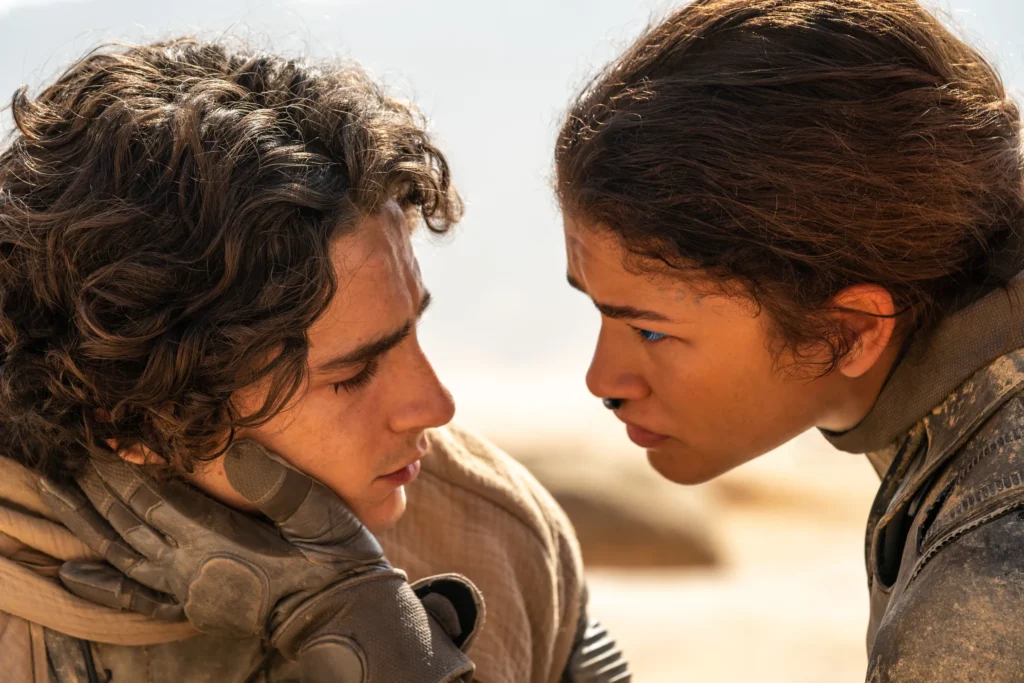
Chalamet, frequently emoting in close-up, shortfalls the emerging stature of a future messiah; part of this is his lithe physicality, the sort that Leonardo DiCaprio possessed until well into the adult era of his film career when he latently developed the physical authority to convincingly play tough guys. The star’s winsome quality can well serve pictures like the recent surprise hit Wonka and his career high performances in Luca Guadagnino’s 2017 heartbreaker Call Me by Your Name (for which he was deservedly nominated for an Oscar) and 2022’s grisly Bones and All, an offbeat survivalist love story in which he summoned a tandem of tenderness and terror. But not every role fits every actor, and here Chalamet, like his work in David Michod’s 2019 historical epic The King, doesn’t naturally possess the required vocal or physical command, handsome as his movie star looks may register on the big screen.
Zendaya, for her part, looks great and handles the desert warrior elements effectively, but like her co-star possesses a 2024, Generation Z quality that makes her too contemporary in a world 20,000 years into the future. In two key scenes she should have been better directed: the first, a public outburst after discovering Paul has taken the water of life, suggests the shout-down of a petulant, overdramatic teen; and later, Villeneuve conveys a romantic triangle by giving his actress close-up reaction shots that state the obvious, reducing the moment’s political intent. Neither Chalamet nor Zendaya fully convince as Herbert’s classical characters, and their romantic interactions, gazing longingly into each other’s eyes against sunset sand vistas, feel pat.
This is the technique-narrative schism at the heart of Dune: Part Two, which is all physical beauty and exotic visuals and little to engage with at the character level, puzzling given the extended run time which should have accommodated more substance. Depending upon how you look at it, Dune: Part Two is either a towering success of transporting, otherworldly sci-fi or a leaden, too heavy for its own good dose of mystic silliness, sweeping its large cast into its architecture while failing to give them substantial enough material.
Dune: Part Two is a meticulously made anthropological opus in its depiction of its people, cultures and tribal and prophetic dynamics; on these fronts it feels richly detailed and marked by a commitment to its source, an experience elevated by sheer directorial audacity. But if you are looking for human complexity or emotion, Dune: Part Two is as dry as Arrakis dust. In the entertainment department, the film diverges starkly from the spirited, albeit controversial, 1984 Dune adaptation by David Lynch, which, despite its initial reception, has matured into a cult classic, celebrated for its imaginative execution and eccentric stylistic choices that render it an oddly mesmerizing, enthralling space opera. It was entertaining, too.
This one, less so. There is much to admire in Dune: Part Two. Enjoying it is another matter.
2 1/2 stars
